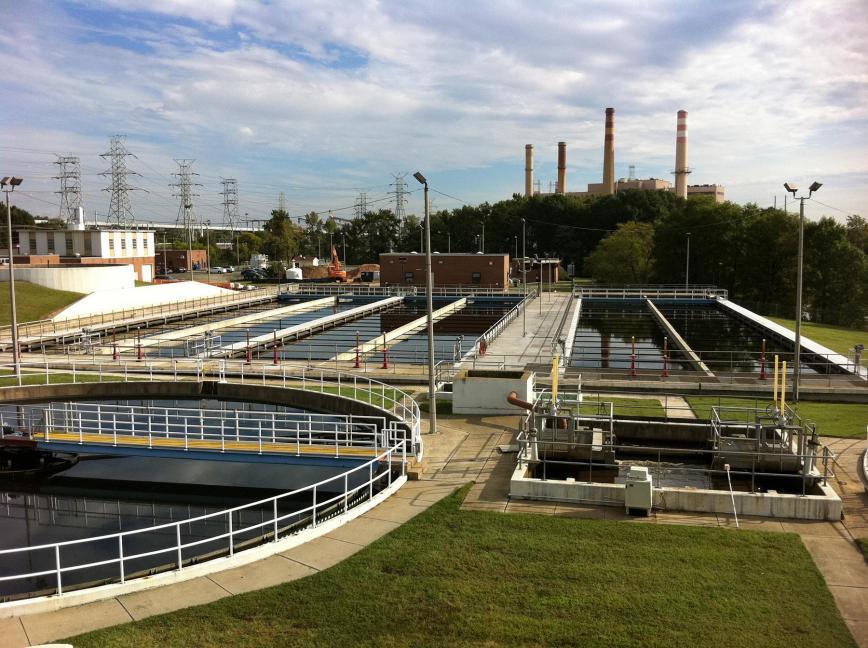The Water & Sewer Master Plan (WSMP) was adopted by County Council Bill 53-22 on June 6, 2022, and approved and enacted by the County Executive on June 9, 2022, with an effective date of July 24, 2022. The Plan was subsequently reviewed by the Maryland Department of Environment (MDE) and was granted final approval by MDE on October 7, 2022.
Please use the links below to review the County Council adopted Plan.
The County Council approved Water and Sewer Master Plan is available here:
The County Council approved detailed maps for Water Supply are available here:
The County Council approved detailed maps for Sewerage Systems are available here:
The Environment Article, Title 9, Subtitle 5 of the Annotated Code of Maryland, requires each county to develop water supply and sewerage systems in accordance with a county master plan that specifies the extent, adequacy, sizing, staging, and other characteristics of such facilities so that they are in compliance with State laws relating to water pollution, environmental protection, and land use. It further specifies that the extension and expansion of such water supply and sewerage systems shall be consistent with the County's General Development Plan (GDP). The State also requires that each county conduct an update of its Master Plan for Water Supply and Sewerage Systems every three years.
The goals of the County Master Plan for Water Supply and Sewerage Systems are to:
- Ensure a sufficient supply of water will be collected, treated, and delivered to areas programmed for service in the Master Plan;
- Ensure wastewater will be collected from all areas programmed for service in the Master Plan and delivered to points best suited for waste treatment and disposal or reuse;
- Both water and sewer services shall be monitored and maintained in a manner that strives to maximize the public health, safety, and welfare for all while minimizing every environmental impact; and
- Incorporate the State's water and sewer planning principles and Smart Growth initiatives to achieve best land management practices, highest water quality protection, and partnered financial support.
FAQs
This Master Plan is a document that is required by Maryland State Law for all Counties to monitor, manage and plan for the orderly development within each County that coordinates the goals and policies of the current Comprehensive Plan(s), serves to protect and care for the surface and sub-surface environmental resources and provides a tool for the daily management of the support infrastructure. It is required to be held current on a minimum of a 3-year cycle, be adopted by the County Government, and coordinate with the State Initiatives to enact the goals and policies of the Maryland State Smart Growth Plan. The Plan consists of a document and set of maps that are guided at a minimum as outlined by COMAR. While each County has differing Zoning Codes and Subdivision Regulations and Comprehensive Growth goals and policies, each County’s Water and Sewer Master Plan strives to coordinate the State Codes with the unique policies and goals of each County and City and are thus specific to each jurisdiction.
The planning for service of public water and sewer is based on zoning and the Comprehensive Plan for long range development. Typically the minimum zoning classification is R-2, which stands for a residential land use district with a development concentration of 2 homes per acre of land, or 1 home per 15,000 square feet. Other factors are evaluated that define the “growth envelope” of the Water and Sewer Service Areas, which include, topography, environmentally sensitive areas, the Maryland State Priority Funding criteria and health concern areas.
Public Utilities are extended through two main methods. As development occurs builders are required to extend the utilities if the site is within the “Planned Service” area and within the required distance for the number of new homes or wastewater generation by the proposed commercial use. As this extension occurs and it nears other lots or developments previously built on individual water and/or septic systems, those parcels with any new improvement or need to replace their individual systems will be required to connect. Secondly, a group of property owners may petition the County for the extension of utilities through the Department of Public Works, Office of Finance and Administration. The County will devise the best alternative to serve the petitioning area and present those costs to the petitioners. If it is approved by a 51% majority consent, the project will proceed and be funded by the entire petitioning group.
The costs of public utility extensions can vary greatly depending on the distance from the best and closest connection point, which determines the infrastructure needs required to serve the area most efficiently, fiscally, environmentally and developmentally. These costs are covered by a user connection charge, Front Foot Assessment Fee (FFA) and a quarterly use fee. Both the public water and sewer utilities operate on an Enterprise Funding basis, not a land tax basis, i.e., it is user based. Each petition extension cost is specific to each design.

